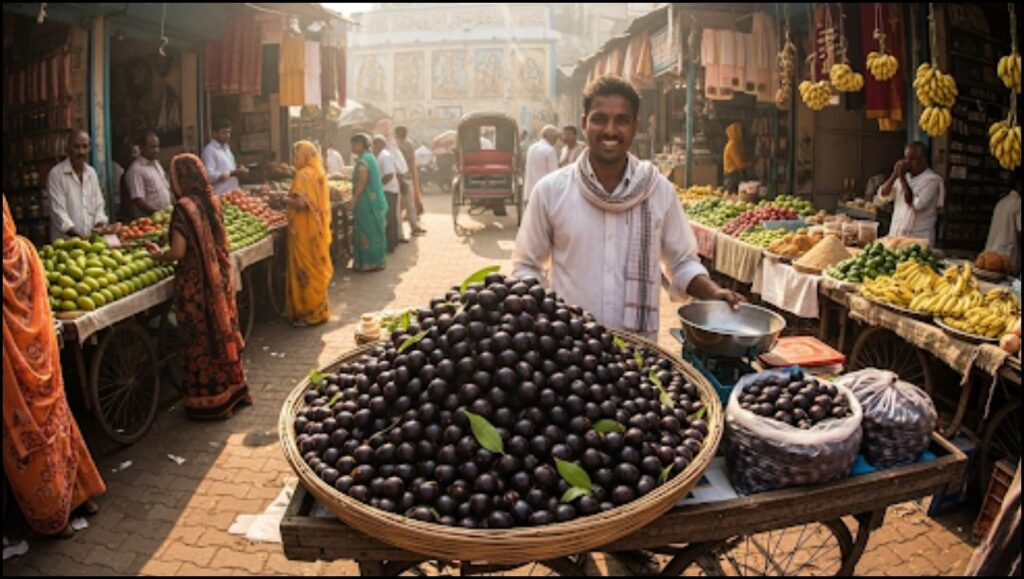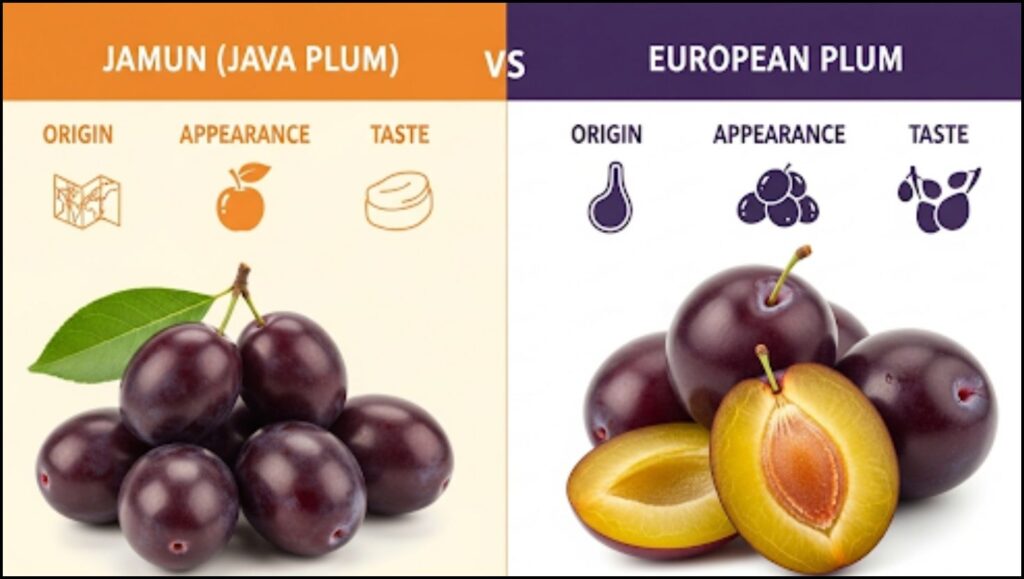India is the world’s leading producer of jamun (Syzygium cumini), a tropical fruit also known as Java plum or black plum, which holds significant cultural and medicinal value. While global agricultural statistics often group the fruit under general “plum” categories, analysis of cultivation practices, indigenous origins, and domestic consumption patterns reveals India’s clear dominance in the specific cultivation of this fruit. The country’s favorable climate, long history of traditional use, and widespread presence in rural landscapes are the primary drivers of this agricultural leadership.

India’s Agricultural Legacy: A Native Fruit’s Global Home
The jamun tree, a tall evergreen, is indigenous to the Indian subcontinent and parts of Southeast Asia. Its roots are deeply embedded in the region’s history, where it has been cultivated for centuries not just for its fruit, but also for its medicinal properties and timber. This long-standing relationship has resulted in a vast, decentralized cultivation network that is difficult to quantify with traditional agricultural surveys.
According to a report from the Indian Council of Agricultural Research (ICAR), the sheer scale of jamun trees, many of which are grown in non-commercial settings like home gardens, village commons, and along roadsides, means that official production figures often underestimate the true output. “Many jamun trees are not part of formal orchards, so they are not captured in traditional agricultural surveys,” said Dr. Priya Singh, a plant scientist at the University of Agricultural Sciences in Bengaluru. “The total tonnage produced and consumed locally is likely much higher than any recorded statistics.”
The Distinguishing Characteristics of Jamun
Understanding the distinction between jamun and other plum varieties is crucial to grasping India’s leadership. While countries like China and Romania are the top producers of a broader category of plums (Prunus species), which include Japanese and European plums, the jamun (Java plum) is a separate species. Jamun fruit is known for its astringent, sweet, and sour taste, and it ripens into a deep purple or bluish-black color. This differentiation explains why general plum production rankings, which place China and European nations at the top, do not accurately reflect the production of this specific fruit.

Drivers of India’s Jamun Production
Several factors contribute to India’s dominant role in jamun (Java plum) cultivation:
- Climatic Suitability: The tree thrives in India’s diverse tropical and subtropical climates. It is highly adaptable and can grow in a wide range of soil conditions, from well-drained loamy soil to poorly drained marshy areas. The species also exhibits a notable resilience to drought once established, making it a reliable crop in various agro-ecological zones.
- Cultural and Culinary Significance: Jamun has a deep-seated cultural and culinary presence in India. It is a highly popular seasonal fruit, and its pulp is used to create a variety of products, including juice, vinegar, jams, and wine. The fruit’s role in traditional medicine, particularly in Ayurveda, has also sustained its demand and cultivation. The seeds, which are a byproduct of consumption, are processed into powder believed to help manage diabetes.
- Decentralized Cultivation: Unlike large-scale, monoculture plantations seen in the production of other fruits, jamun is often grown by smallholder farmers and even in urban and suburban settings. This widespread, decentralized approach, while making official data collection difficult, ensures a consistently high aggregate volume of production across the country. Key producing states include Maharashtra, Uttar Pradesh, Tamil Nadu, and Gujarat, where the tree is integral to the rural landscape.
A Limited Export Market and Future Prospects
Despite its massive domestic production, the jamun (Java plum) has a limited presence in the international export market. This is primarily due to the fruit’s highly perishable nature and its strong astringent taste when not fully ripe, which requires careful handling. A report from the Pakistan Society for Horticultural Science notes that while India is the leading producer, a lack of organized orcharding and a focus on domestic consumption has limited its transition into a major export commodity.
However, interest in jamun is growing globally, driven by its reputation as a health-promoting “superfruit.” Researchers and agricultural innovators are exploring new cultivation methods and value-added products that could improve its shelf life and make it more viable for international trade.
Concluding with an Outlook
The story of the jamun (Java plum) is intrinsically linked to India’s vast and diverse agricultural landscape. While precise, verifiable production statistics for this specific fruit are scarce due to its traditional cultivation methods, all available evidence and expert consensus point to India as the undisputed global leader. As global trends shift toward seeking out unique and health-conscious foods, the country’s extensive cultivation and rich heritage surrounding jamun position it perfectly to meet future demand, both at home and potentially abroad.
5 Drought-Tolerant Fruit Trees That’ll Flourish Even in the Harshest Heatwaves
